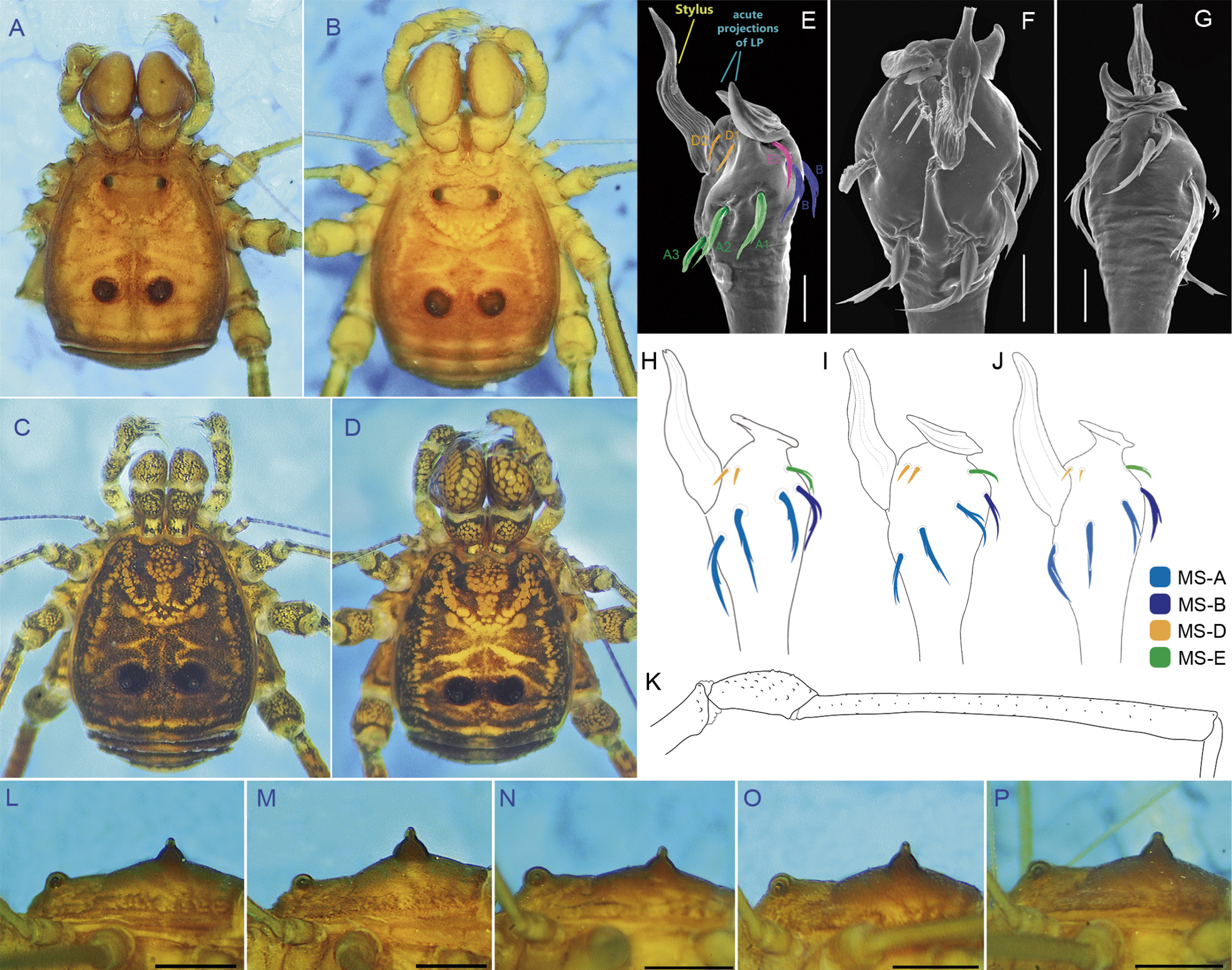
|
||
|
Habitus, male genitalia and leg of Paravima goodnightorum Caporiacco, 1951. Males, dorsal view: A From Caurimare river, Caracas (MIZA 0105918, paratype of P. flumencaurimarensis); B from Colonia Tovar, Aragua state (MIZA 0105920, paratype); C from Cerro El Volcán, south of Caracas, Miranda state (MIZA 0105904); D from El Limón, near Colonia Tovar, La Guaira state (MIZA 0105911). Apical portion of the penis under SEM (MNRJ 18301*): E Lateral view; F dorsal view; G ventral view. Drawings of the apical part of the penis under optical microscopy: H From El Volcán (MIZA 0105904); I paratype of P. flumencaurimarensis (MIZA 0105918); J paratype from Colonia Tovar, Aragua state (MIZA 0105920); K leg IV, patella and tibia, retrolateral view (MIZA 0105918); L–P variation of the paramedian tubercles of area III, in lateral view: males (L, M) and females (N–P) (MAGS 237). Macrosetae A–E follows the Kury and Villarreal (2015) system. Abbreviations: LP = Lamina Parva, MS = Macrosetae. Scale bars: E–G = 50 μm; A–D, H–K = not scaled. SEM photos courtesy of Adriano B. Kury. |